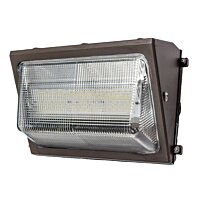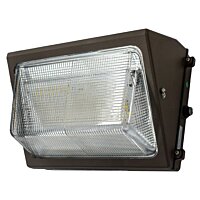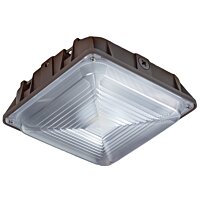Car Wash Lighting Overview
Car washes are common globally with approximately 17,000 active car washes in the United States alone. Considering that vehicles are the second largest investment people will make in their lifetimes, it should come as no surprise that keeping cars in pristine condition is a high priority for most individuals. With car washes comes multiple pieces of machinery and equipment, some of which is inherently dangerous to those operating it. In addition to this, it is important that vehicles are actually cleaned and detailed properly in order to ensure repeat customers.
Luckily for the carwash industry, LED technology has advanced lightyears ahead of the prehistoric lighting technology that was once the only option available. These lights are not only more energy efficient and longer lasting, they also produce significantly higher lumen outputs with a higher quality of light for dramatically improved visibility and safety. Because they do not require regular maintenance, most fixtures are sealed for life - which makes them far more resistant to the tough environmental conditions of car washes such as direct water sprays, moisture and harsh cleaning chemicals.
Car Wash Lighting Design
There are many different factors that go into configuring an effective lighting design for car washes. One of the biggest factors that determines the type of fixture used in the first place is the ceiling height of the car wash itself. This will significantly impact the decision as to what lumen output is required in order to achieve the right luminosity at the ground level. Additionally, the beam angle of the fixture will need to be taken into account, which will determine the placement of fixtures within the facility, as well as their number. Below is an example of a photometric plan for a typical car wash.
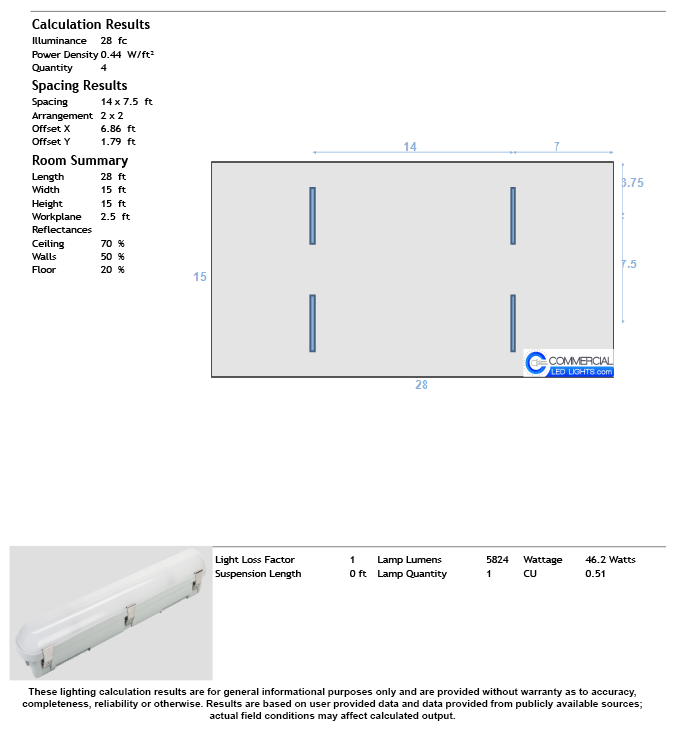
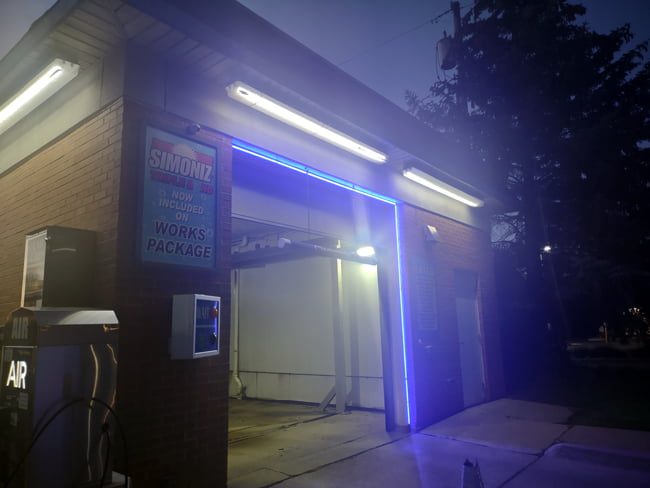
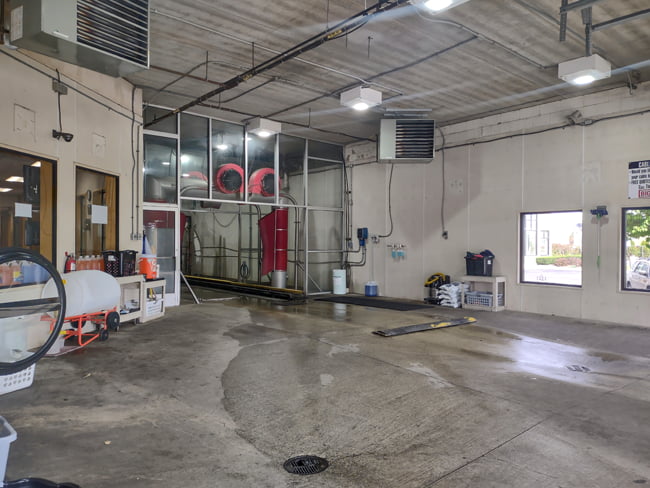
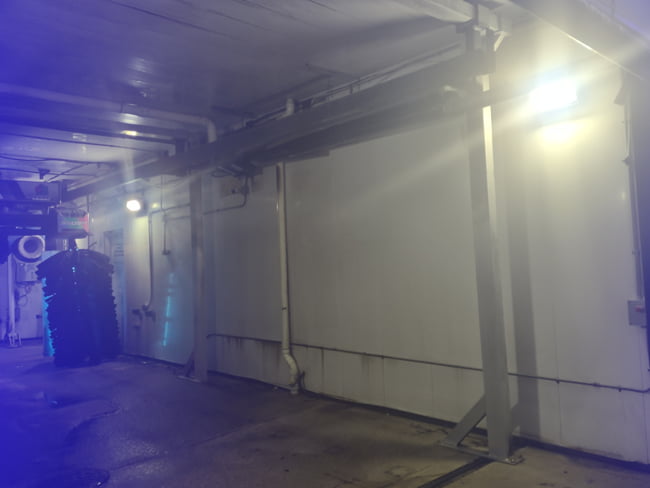
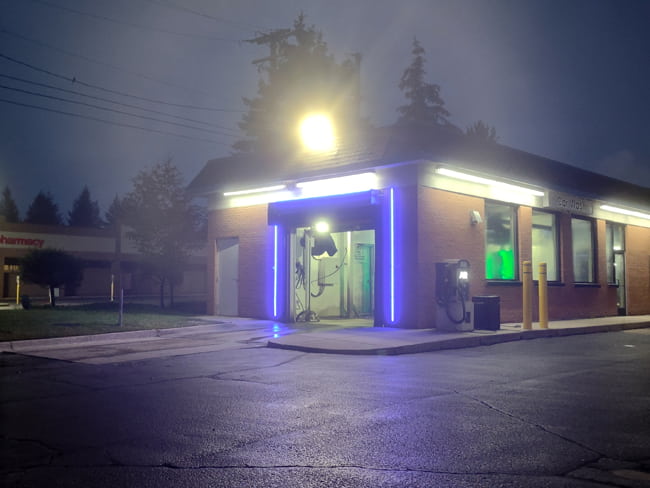
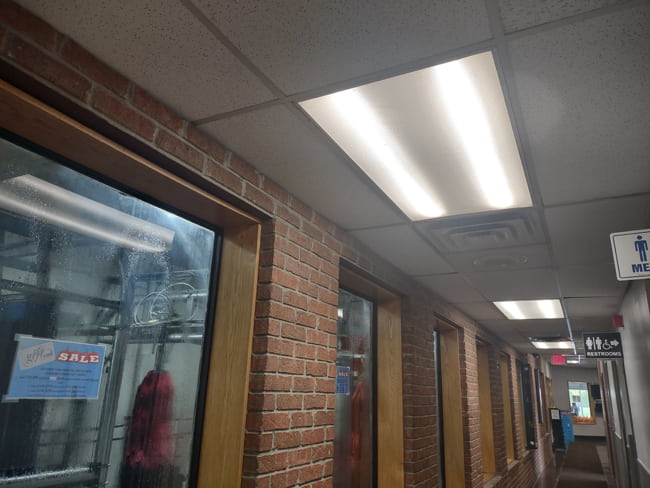
Different Car Wash Lighting Setups
There are various types of car washes in operation, from simple unstaffed self-serve faculties to large scale operations with hand drying and detailing. The light fixture selected will usually depend on the type of facility it will be installed in, as they will have different lighting requirements. Most facilities will have varying lighting requirements in different parts of the operation, usually divided up into indoor and outdoor lighting.
The most basic setups for car wash lighting are in self-serve type operations, which normally involve an open wash bay that a customer drives their car into and washes themselves using the provided power washer nozzle and foam brush. In these facilities, there are normally exterior lighting fixtures such as wall packs on the outside of the building to light its perimeter, as well as flood lights mounted from poles to illuminate the driveway and self-serve vacuum areas. For the wash bay itself, canopy lights and vapor tight fixtures are the most popular as they provide good lumen output and are sealed from moisture and the elements.
For other more complex operations such as automated car washes, the lighting requirements are more stringent. These facilities have far more complex machinery that brings with it a unique set of lighting challenges. Although the machines do not require operators regularly in order to accomplish tasks, every so often they do require maintenance or repair. A properly lit wash area is critical for employee safety while this is work taking place, as well as to ensure it is completed properly.
Generally speaking with automated car washes, the interior lighting fixtures will be the same canopy and vapor tight fixtures, just in larger quantities to ensure more intense lumen output. This is also true for the outdoor fixtures, as automated car washes are usually larger in size than self-serve operations, requiring additional flood lights as well as wall packs to ensure adequate visibility for customers. Certain automated and large scale car washes include indoor hand drying and detailing areas, which often make use of higher powered fixtures such as low bay lights to ensure enough visibility for detailing work to be carried out properly.
With exceptionally high lumen output, low bay lights are ideal for areas where detailed work takes place, such as workshops, auto shops and vehicle detailing areas. Typically hung from cables, chains or other suspension methods, these fixtures are designed to project a wide beam angle that works great for heights 20’ and under.

